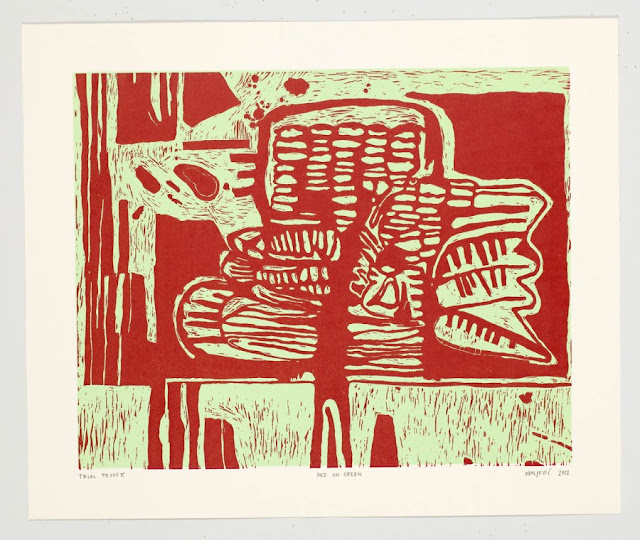Kalk Bay Modern will be hosting its annual ART on PAPER exhibition in April, opening 17 April and running till 17 May. It will be a group show featuring works on paper by artists both new and familiar to the gallery. This week's entry will feature works by Eugenie Marais, Walter Oltmann and Maja Maljevic that will be on exhibit in April.
Eugenie Marais:
Eugenie Marais was born in the Western Cape and after completing her degree at the University of the North West moved to Pretoria where she now lives. She has been a full time artist since 2003.
Marais explains “I portray the emptiness through the choice of subject matter and the sparse use of my medium”. In the three lithographs of a dog (a fox terrier which belongs to her parents in law, a family pet) she also plays with titles. “Almost true” “Yesterday’s favorite”, “What about love?”, there is no real connection between the work and the title. Marais is playing with what your eyes see and what the text evokes emotionally. She aims to unsettle the viewer. “Fox Terrier I, II, and III” would just not have the same impact. For each person the connection with the word and image is different.
 |
| Almost true by Eugenie Marais |
 |
| Yesterdays favourite by Eugenie Marais |
 |
| What about love by Eugenie Marais |
Walter Oltmann:
Walter Oltmann is interested in the interface between humans and animals, notably insects. In recent works he has explored ways in which insect adaptations can combine with human features, for example in woven wire suits of armour reflecting the exo-skeletons of beetles. Insects evoke notions of threat (especially when encountered in swarms) but are also vulnerable in the face of humans. They feature extraordinary sensory adaptations and undergo spectacular transformation through a process of metamorphosis. Oltmann references explorers’ books and the records of the first meetings between Africans and Europeans. He is fascinated by the written and visual observations that were made by each of the other and comments that “in a way, insects are our most extreme other”. The European obsession with taxonomy, collecting and ordering interests Walter, as does the nostalgia that we attach to explorers’ illustrations.
 |
| Collection II by Walter Oltmann |
Oltmann respects and admires the mastery seen so often in items of African domestic craft work. Finely woven baskets, hand woven fabrics, wirework and the iconography associated with these objects are a source of inspiration.
 |
| Child Skull I by Walter Oltmann |
 |
| Child Skull III by Walter Oltmann |
Maja Maljevic:
Maljevic's interest in the
relationship between two shapes within a composition is informed
primarily by an interest in the shapes themselves rather than the
arrangement’s capacity to be symbolic of an experience or representative
of an essential emotional state. In as much as Maljević unravelled her
traditional training in order to find her own voice, her grounding in
the academic and the classical allowed her to bloom through abstraction,
engaged in an act of creation that sidesteps diegesis.
 |
| Red on Green by Maja Maljevic |
 |
| Red on Grey by Maja Maljevic |

No comments:
Post a Comment